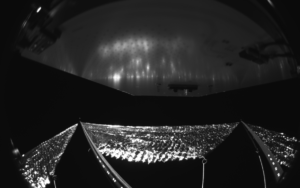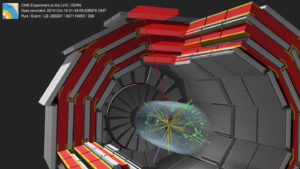Some would say the news from September are small, but I would say they are pretty significant if you look at them from the right angle: NASA’s solar sail is doing fine and the Standard Model of elementary particles keeps triumphing. What’s not to love?

NASA’s solar sail is doing fine: The prototype Advanced Composite Solar Sail System (ACS3) has fully deployed its sails and is orbiting Earth smoothly. Translation: It is flying successfully propelled by sunlight.
The cubesat thing is pushed by literally radiation pressure, a thing that photons -the particles making up light- can totally do. Experimental crafts with solar sails were deployed twice in the past, but this is a more serious take. And it can lead to an inexpensive lightweight means of space exploration.
The Standard Model of elementary particles keeps triumphing: The Standard Model is officially the most succesful scientific theory in history (i.e. the most successful theory in history). The reason we say so? A vast number of different predictions that it makes about the properties of particles have been verified; repeatedly; to excellent precisions. Now, two more measurements of such properties came strutting in.
The first one was at NA62, one of CERN’s smaller experiments. After a decade of preparations and taking of data, they saw for the first time a rare decay of the particle known as K+ or positive kaon (made up from an “up” quark and an anti-“strange” quark, if you have to know).
When left alone, most particles will turn spontaneously to other types of lighter particles after a short time (aka they will decay). Usually they can decay into different sets of particles, each with a different probability. This could sound random, but these sets and their probabilities are actually very very well defined by the Standard Model. And the quite rare predicted decays of a K+ into a so-called positive pion and a pair of a neutrino and an antineutrino were seen clearly in the data for the first time ever. Rizz.

The second measurement was at CMS, one of CERN’s larger experiments. This one is slightly more dramatic, because of the previous measurement at another experiment (CDF), which showed that something dared diverge from Standard Model predictions.
More specifically, that something was the mass of the W boson. The W boson is one of the particles responsible for the weak force, one of the two types of nuclear forces. And a couple of years back Fermilab’s CDF experiment saw it being different than calculated predictions.
However, even earlier other experiments had seen it being consistent with the predictions. To be honest? I shouldn’t even be writing about this today. Everyone expected that CDF’s would turn out to be the odd measurement for some reason or other, and this is what the new CMS measurement says. Nobody should have doubted the Model on such a core prediction, and I actually think that nobody did. But, one more chance for it to shine.
—
Do you want to receive one monthly reminder with links to the Ph-word posts? Join the mailing list.

